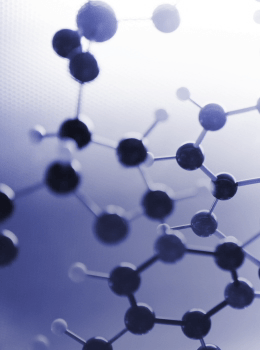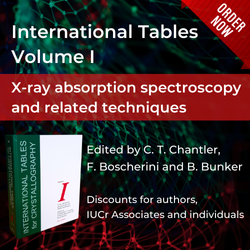
Meeting report
CCDC Science Day
![Thumbnail [Thumbnail]](https://www.iucr.org/__data/assets/image/0011/158915/CCDC-Science-Day-Group-Photo.jpg)
The Cambridge Crystallographic Data Centre (CCDC) sponsors a number of PhD and Master's students each year and co-supervises them alongside leading scientists from academic and commercial institutions. As a charitable institution, its mission is to support the development of the next generation of scientists. Every year, these students and their external supervisors are invited to the CCDC office in Cambridge, UK, to spend a day presenting their research, listening to their peers and sharing knowledge and ideas.
This year wasn’t any different. CCDC Science Day 2024 on 27 June started with Nathan Hennessy, a third-year student from the University of Leeds, presenting on “Cooling Crystallisation from Binary Solvent Mixtures: Relationships between Solvent Composition and Activation Barriers for Nucleation”. Nathan presented crystallization at the molecular level, focusing on the example of L-histidine and explained the process of solution and crystallization, emphasizing the importance of factors such as Gibbs free energy, enthalpy, entropy and solvent composition. His research goals involve determining activation barriers for dissolution and crystallization, correlating them to solvent composition and analyzing trends using computational data. The workflow created by Nathan involves assessing solubility profiles to determine the feasibility of crystallization using different solvent mixtures, and he is exploring how data from the Cambridge Structural Database (CSD) can be used to understand these processes.
Dori Gasparikova, a final-year student from Durham University, presented her research on glucokinase (GK) and its role in the body, particularly in the liver where it converts glucose into glycogen and in the pancreas where it is involved in glucose-stimulated insulin release. The importance of studying GK concerning diabetes management was emphasized, considering the adverse effects of current therapeutics. Dori also referred to potential binders of GK, including activators and inhibitors. Her project goals were divided into experimental and computational methods, involving protein expression and purification, as well as docking experiments to guide the design of molecules. The optimization of GK expression, purification and validation was described, along with the initial steps in protein purification using affinity chromatography with a HisTrap HP column.
Harry Nash is in his final year at Sheffield University, and he presented his work on exploring and predicting sigma-hole interactions in the CSD using machine-learning techniques to predict interaction energies. Harry explained the nature and characteristics of sigma-hole interactions, the expected trends and the reasons for the interest in these interactions. The workflow involves searching the CSD with ConQuest, using the CSD Python API for automation of searches, geometric trend analysis of the data, machine learning using a database of sigma-hole interactions and their calculated energies, and finally validation against a dataset of molecular cutouts from the CSD.
Emilia Prandini, a second-year student from Politecnico di Torino in Italy, was up next to present her project “Predicting particle quality attributes of organic crystalline materials using particle informatics”. Her main topic was predicting the particle quality of crystalline materials using informatics methods, focusing on a case study of a quercetin dimethyl formamide solvate. Her presentation covered crystal engineering, particle informatics methods and the impact of crystal properties on particle quality attributes. The methodology combines computational and experimental approaches, including XRD, molecular modelling, surface analysis, thermal stability studies, crystal phase determination and crystal growth analysis. Emilia’s research aims to correlate crystal structure with surface properties, particularly focusing on the desolvation behaviour of this complex quercetin/dimethyl formamide system.
As usual, we wrapped up the day with engaging lightning talks from our first- and second-year students. We started with Aaron Horner, from the University of Southampton, who is evaluating new methods to quantify complex molecular models. Henry Holleb, from Durham University, is researching the hydration of pharmaceutical salts. James Broster, from the University of Oxford, is studying physics-based and machine-learning docking methods. Alex Lee, from Durham University, is researching high-throughput conglomerate synthesis and analysis. William Midgley, also from Durham University, aims to use GOLD to aid PROTAC linker design. Finally, Omar El-Habbak, from the University of Strathclyde, is focused on correlating digital and experimental chemical space to pharmaceutical manufacturing processes.
The presentations covered a wide range of topics, from molecular level crystallization to predicting particle quality attributes of organic crystalline materials, showcasing the depth and breadth of scientific inquiry being pursued. The engagement and enthusiasm of both the students and their supervisors were evident throughout the day, highlighting the collaborative and supportive environment fostered by the CCDC. It was truly a day of knowledge sharing, inspiration and celebration of scientific inquiry.
Blog highlights
CCDC scientist awarded prestigious BACG Young Scientists Award
![[Fig. 1]](https://www.iucr.org/__data/assets/image/0003/158916/Screenshot-2024-07-28-at-08.39.54.png) Dr Pietro Sacchi, Research and Application Scientist at the CCDC, has been awarded the British Association for Crystal Growth (BACG) Young Scientists Award for his exceptional research on the HIV drug Ritonavir. The award is granted annually to a candidate who has made the most significant advance in the understanding of crystal growth processes. Pietro won based on his ground-breaking paper "Crystal Size, Shape, and Conformational Changes Drive Both the Disappearance and Reappearance of Ritonavir Polymorphs in the Mill".
Dr Pietro Sacchi, Research and Application Scientist at the CCDC, has been awarded the British Association for Crystal Growth (BACG) Young Scientists Award for his exceptional research on the HIV drug Ritonavir. The award is granted annually to a candidate who has made the most significant advance in the understanding of crystal growth processes. Pietro won based on his ground-breaking paper "Crystal Size, Shape, and Conformational Changes Drive Both the Disappearance and Reappearance of Ritonavir Polymorphs in the Mill".
CSD Tools in Action: Cocrystal Design and Structural Features Analysis
Izabela Madura and co-workers from the Warsaw University of Technology, Poland, used crystal structure analysis from the CCDC to design and study two cocrystals of caffeine and phenylboronic acid. This study investigates two cocrystal polymorphs composed of caffeine and 4-chlorophenylboronic acid using solid-state informatics tools.
Read more here.
CCDC Online Events: Free Virtual Workshops in October and November 2024
- 8 October: First Steps in Protein-Ligand Docking With GOLD
- 22 October: ConQuest to Mercury – From Searching to Data Analysis
- 5 November: Introduction to Pharmacophore Searching Using CSD-CrossMiner
All sessions are 90 minutes long and will include presentations and demonstrations by CCDC expert tutors and a hands-on part for participants to try the software, with the tutors available to help and answer questions. See here for more information.
CCDC Engagement Grant
Applications for the 2024/2025 round of CCDC Engagement Grants are now open! Awards are available to fund the creation of new STEM outreach activities and resources about crystallography or structural science to inspire non-specialist audiences, such as children and the general public.
Whether it's a video, social media content, game, poster or any other related activity, the CCDC wants to hear your ideas! You can explore the resources created by the winners of previous years’ engagement grants here for inspiration. Applications close on 30 September 2024 (11:59 pm BST).
Copyright © - All Rights Reserved - International Union of Crystallography








